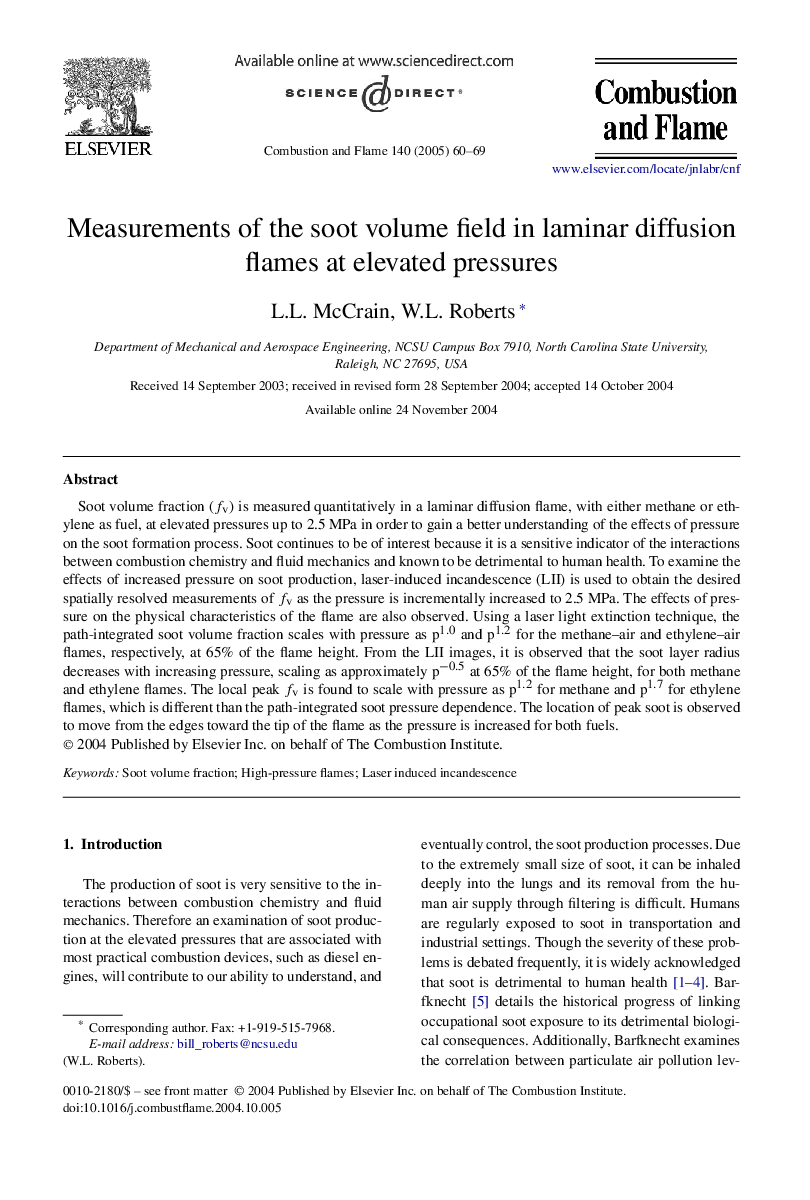| Article ID | Journal | Published Year | Pages | File Type |
|---|---|---|---|---|
| 9624547 | Combustion and Flame | 2005 | 10 Pages |
Abstract
Soot volume fraction (fv) is measured quantitatively in a laminar diffusion flame, with either methane or ethylene as fuel, at elevated pressures up to 2.5 MPa in order to gain a better understanding of the effects of pressure on the soot formation process. Soot continues to be of interest because it is a sensitive indicator of the interactions between combustion chemistry and fluid mechanics and known to be detrimental to human health. To examine the effects of increased pressure on soot production, laser-induced incandescence (LII) is used to obtain the desired spatially resolved measurements of fv as the pressure is incrementally increased to 2.5 MPa. The effects of pressure on the physical characteristics of the flame are also observed. Using a laser light extinction technique, the path-integrated soot volume fraction scales with pressure as p1.0 and p1.2 for the methane-air and ethylene-air flames, respectively, at 65% of the flame height. From the LII images, it is observed that the soot layer radius decreases with increasing pressure, scaling as approximately pâ0.5 at 65% of the flame height, for both methane and ethylene flames. The local peak fv is found to scale with pressure as p1.2 for methane and p1.7 for ethylene flames, which is different than the path-integrated soot pressure dependence. The location of peak soot is observed to move from the edges toward the tip of the flame as the pressure is increased for both fuels.
Related Topics
Physical Sciences and Engineering
Chemical Engineering
Chemical Engineering (General)
Authors
L.L. McCrain, W.L. Roberts,
